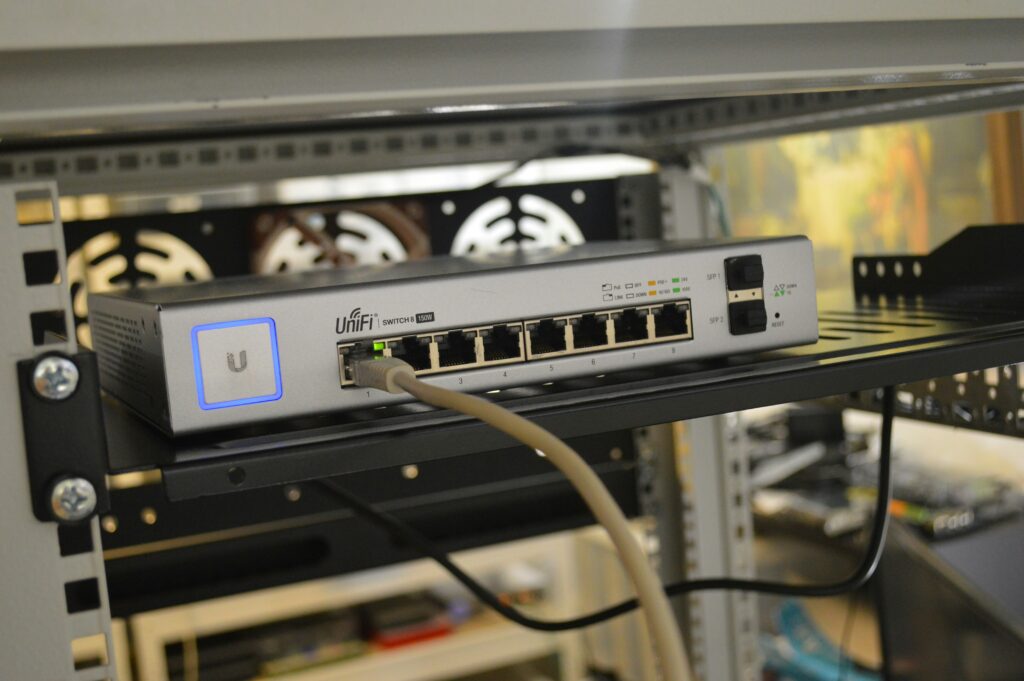Circle Internet Group Inc. (NYSE:CRCL) is a global financial technology company that stands at the forefront of the digital asset revolution. Founded in 2013 by tech entrepreneur Jeremy Allaire and Sean Neville, Circle began with a mission to reimagine the flow of money in an internet-native world—delivering real-time, borderless, and programmable financial infrastructure. Over the last decade, Circle has evolved from a blockchain-based payments startup into a market-defining issuer of USDC (USD Coin)—a fully regulated, dollar-backed stablecoin now used by millions across more than 190 countries.
Headquartered in Boston, Massachusetts, Circle has positioned itself as the financial layer powering the next generation of commerce, banking, and decentralized finance (DeFi). The company’s core innovation, USDC, was launched in collaboration with Coinbase in 2018 and has since grown to become the second-largest stablecoin globally, processing trillions of dollars in cumulative transaction volume. What sets USDC apart is its full 1:1 backing by U.S. Treasuries and cash equivalents, audited monthly and designed for transparency, regulatory compliance, and institutional-grade trust.
Circle’s foundational vision has always extended beyond stablecoins. As digital money adoption accelerates worldwide, Circle is building an ecosystem of API-driven financial services—from payments and merchant settlement tools to cross-border treasury management and tokenized assets. These offerings are designed to integrate seamlessly with banks, fintech companies, governments, and developers building on Web3. The company has forged strategic partnerships with major financial institutions, including Visa, Mastercard, Stripe, BlackRock, and BNY Mellon, reflecting the growing intersection between traditional finance and blockchain infrastructure.
A key driver of Circle’s recent momentum has been its alignment with emerging regulatory frameworks. As the U.S. government advances stablecoin legislation to clarify the legal status of dollar-backed digital assets, Circle is poised to benefit from its early commitment to compliance, transparency, and reserve integrity. Its regulatory-first approach sets it apart from offshore or opaque competitors, and positions it to become a leading infrastructure provider for institutional-grade digital payments.
In June 2025, Circle completed its highly anticipated initial public offering (IPO) on the New York Stock Exchange, debuting under the ticker symbol CRCL. The stock soared over 434% from its $31 IPO price, closing at $151 just two weeks after listing—underscoring Wall Street’s growing confidence in Circle’s role as a pivotal enabler of the new financial internet. With billions in revenue already flowing from interest-bearing reserves, a robust infrastructure platform in place, and new opportunities on the horizon in tokenized finance, Circle is no longer just a crypto company—it is a foundational building block of the modern financial system.
As global finance continues its transition to real-time, programmable, and blockchain-integrated infrastructure, Circle Internet Group is uniquely positioned to lead. With deep regulatory engagement, powerful partners, and a vision rooted in financial inclusivity and innovation, Circle is helping shape a digital economy where money moves as freely as information.
From $31 to $165.60: Circle’s IPO Sends a Signal to Wall Street
Circle’s IPO has already entered the record books. Priced at $31 per share on June 5, CRCL skyrocketed by 434% in less than two weeks, peaking at $165.60 before settling at $151.06 on June 16. Trading volume exceeded $42 million daily, reflecting massive inflows from institutions, hedge funds, and crypto-forward asset managers. Even as some profit-taking emerged—most notably from ARK Invest, which sold $51.7 million worth of stock out of its $373 million position—the enthusiasm remains high.
What’s driving this surge? It’s not just hype. Circle’s valuation reflects growing institutional belief in the inevitability of regulated, fiat-backed stablecoins. And in this space, USDC is king. Unlike speculative tokens or offshore-backed coins like Tether (USDT), USDC is fully backed by U.S. Treasuries and cash equivalents, giving it unmatched credibility among banks, governments, and fintech firms.
Circle’s IPO also comes at a time when the U.S. is on the verge of passing a stablecoin-friendly regulatory framework, referred to by some analysts as the “GENIUS Act.” The bill has already cleared the Senate and is expected to be signed into law within months under the pro-crypto Trump administration. This could make Circle one of the first legally codified stablecoin issuers in the United States—a massive advantage that could drive further institutional adoption and API integration into banks, apps, and financial platforms worldwide.

CHECK THIS OUT: MicroVision (MVIS): A Top Pick in Autonomous Tech Stocks and Innoviz (INVZ) May Be Severely Undervalued — Investors Shouldn’t Ignore This Stock.
Circle’s Business Model: From Reserve Income to Financial Infrastructure
At its core, Circle earns money by holding billions of dollars in short-term U.S. Treasuries and cash equivalents that back every issued USDC token. These reserves generate interest income, which totaled $155.7 million in 2024 alone. In Q1 2025, Circle posted $578.6 million in revenue, representing a 59% year-over-year increase, and delivered a solid $122.4 million in adjusted EBITDA. This proves Circle is not only growing but doing so profitably, even before layering on other service-based revenue models.
Beyond its stablecoin business, Circle is increasingly developing infrastructure tools, including payment APIs, digital treasury solutions, and cross-border remittance rails for both fintech startups and traditional banks. This diversification mimics what Amazon Web Services did for cloud computing. As USDC adoption grows, so too will the demand for Circle’s API-based monetization services—transforming the company from a yield-based business into a platform-based fintech infrastructure giant.
CEO Jeremy Allaire has made clear that Circle’s mission is to integrate USDC into every layer of mainstream finance—from point-of-sale terminals to capital markets. The company is actively building partnerships with Visa, Mastercard, Stripe, and international banks to offer compliant digital cash rails. These aren’t just aspirations. These are unfolding realities in the post-IPO era of accelerated growth and institutional trust.
A Digital Dollar Without the Politics
As the debate over Central Bank Digital Currencies (CBDCs) continues, Circle offers the market a private-sector equivalent to a digital dollar—but without the surveillance concerns or bureaucratic delay. USDC is programmable, instantaneous, and now integrated across over 190 countries, processing trillions of dollars in transaction volume since inception. Unlike decentralized tokens with murky compliance, USDC’s regulatory clarity, auditability, and backing by top financial firms like BlackRock, Fidelity, and ARK Invest give it the trust needed to scale to central bank-like relevance without requiring state control.
Circle is now being recognized as a core piece of fintech infrastructure, not a volatile crypto bet. With blockchain becoming the backend of finance and Web3 converging with Web2, the company’s alignment with regulatory frameworks and traditional finance creates a uniquely positioned business model.
Regulatory Moat and Institutional Advantage
With the U.S. Senate’s passage of the GENIUS Act—and House ratification expected soon—Circle will benefit directly from being a fully compliant, U.S.-regulated stablecoin issuer. This gives it a powerful moat. Competitors that cannot meet audit standards, risk management thresholds, or legal backing will likely be sidelined, opening the door for Circle to capture a dominant share of what many expect to become a $2 trillion digital money market in the next 5 to 7 years.
This regulatory tailwind also de-risks Circle’s business model. Unlike other crypto companies that operate in legal gray zones, Circle can scale with the confidence of its partners and the protection of a rules-based ecosystem.
Momentum and Valuation Outlook: Why CRCL Still Has Room to Run
At a current market cap of around $33 billion, Circle trades at approximately 8× projected 2025 revenue, making it cheaper than many traditional fintech peers like PayPal, which trades near 30× forward earnings. Given the speed of adoption, the expanding stablecoin market, and the monetization of Circle’s infrastructure stack, many analysts believe CRCL could trade toward $250–300 per share in the medium term—representing another 70–100% upside from current levels.
Circle is also increasingly being adopted by governments, NGOs, and Fortune 500 companies as the default digital payment rail, and this increasing adoption of USDC will help Circle diversify from interest income toward higher-margin SaaS and API fees, recurring revenue, and B2B transaction processing. As these revenue lines scale, CRCL could command premium fintech multiples more comparable to Stripe or Adyen than legacy payment companies.
Conclusion: A New Financial Superstructure in the Making
Circle Internet Group Inc. is no longer just the company behind a stablecoin. It’s becoming a central node in the global transition from paper money and legacy banking to programmable, transparent, and regulated digital assets. With record IPO performance, explosive financial growth, and first-mover advantage in a soon-to-be-regulated environment, Circle is laying the foundation for what could become the Visa or PayPal of blockchain-native finance.
As stablecoins go mainstream and the regulatory fog lifts, CRCL is perfectly positioned to become one of the most valuable fintechs of the decade. Whether you’re looking at the numbers, the narrative, or the network effects, one thing is clear: Circle isn’t just participating in the digital finance revolution—it’s building it.
READ ALSO: Golden Matrix Group (GMGI): The Explosive iGaming Stock You’re Probably Sleeping On and This AI Stock Powers Millions of Conversations Daily—LivePerson (LPSN) Deserves a Spot on Your Watchlist.






